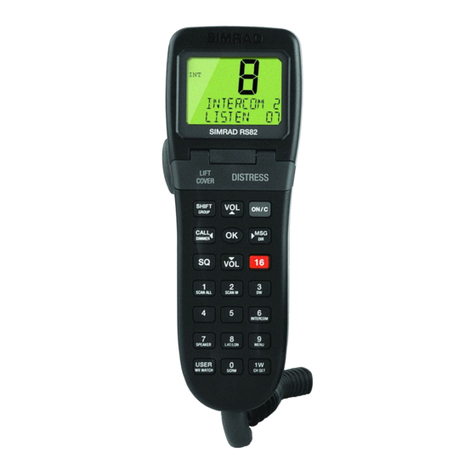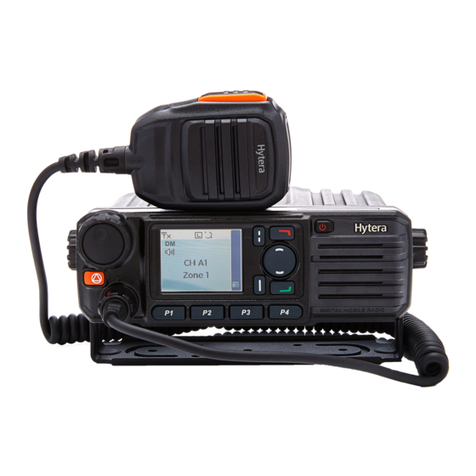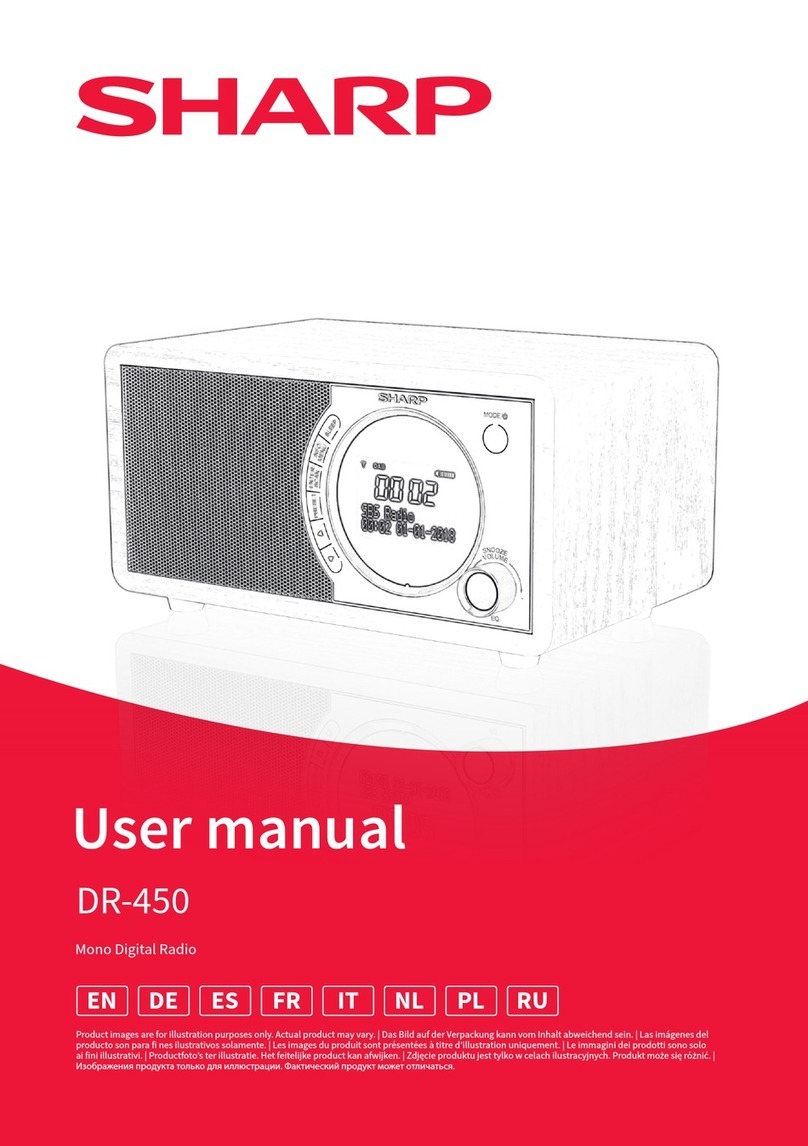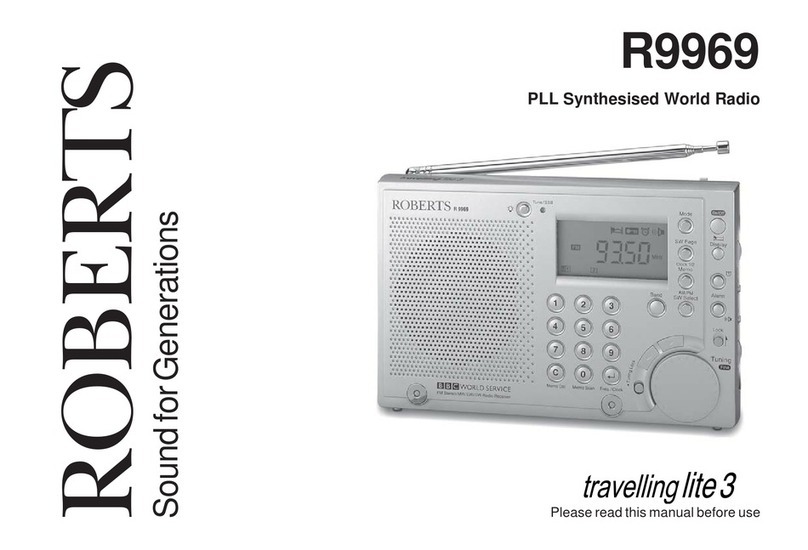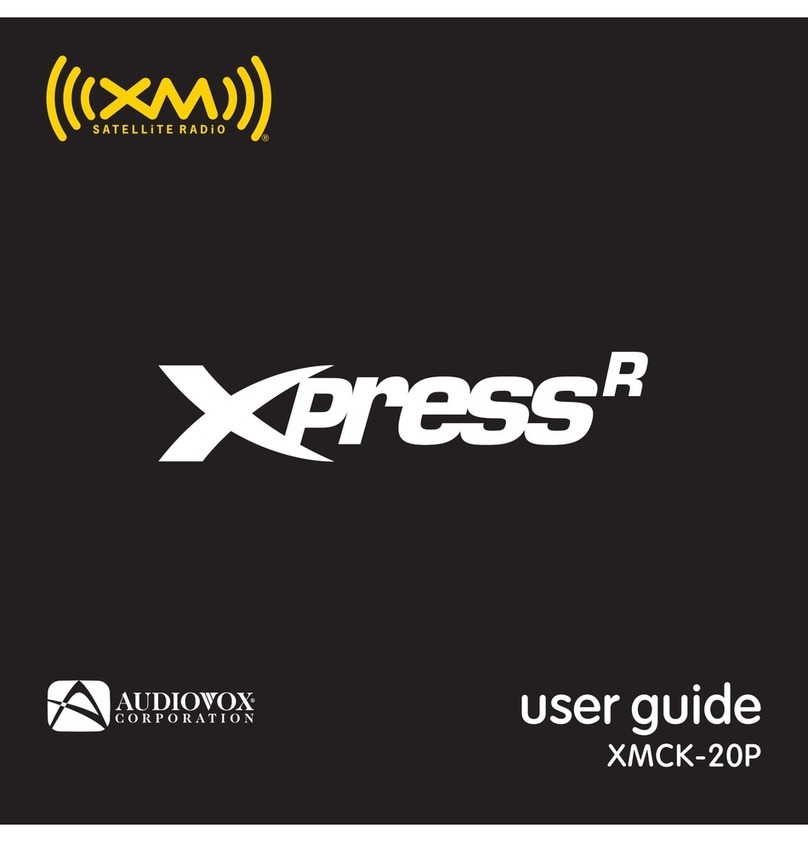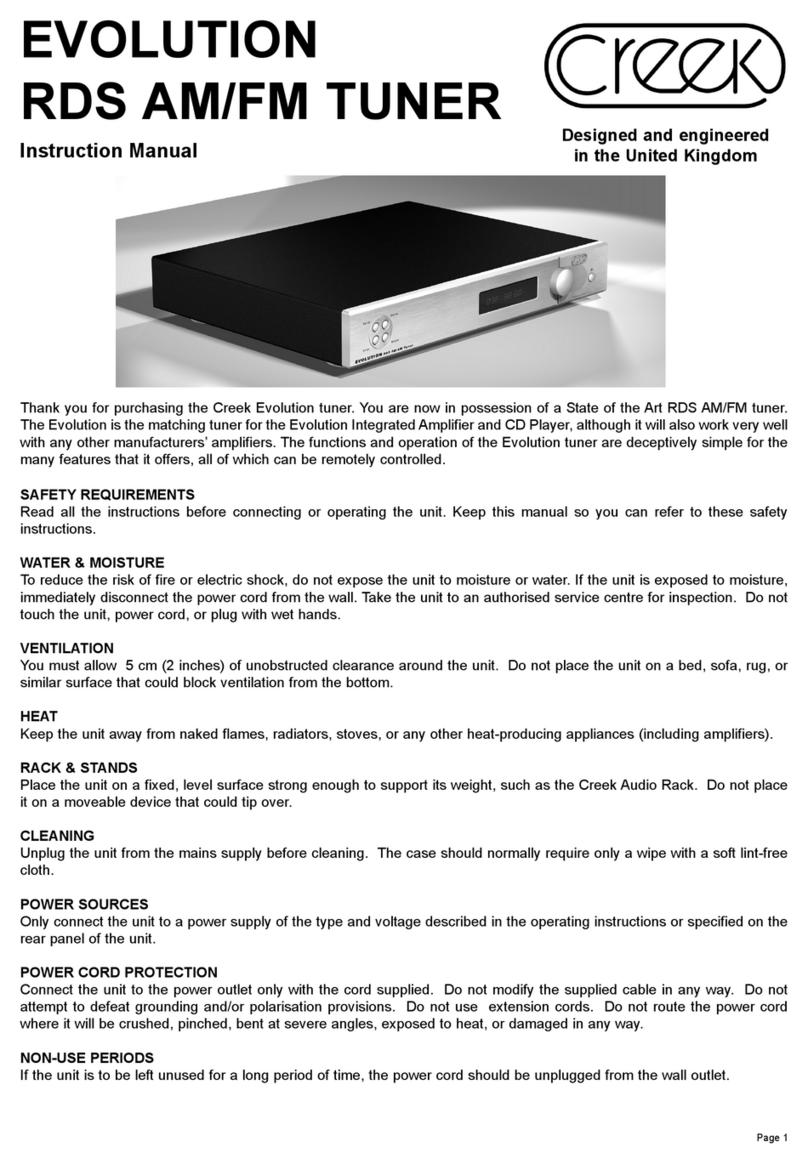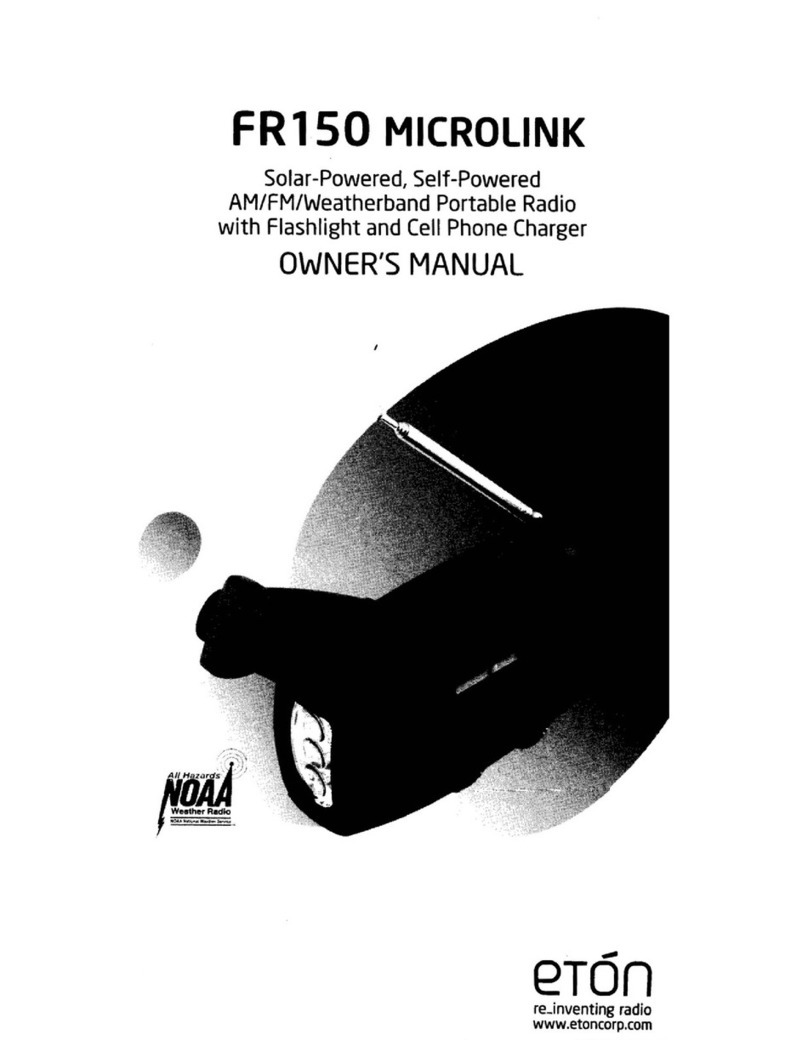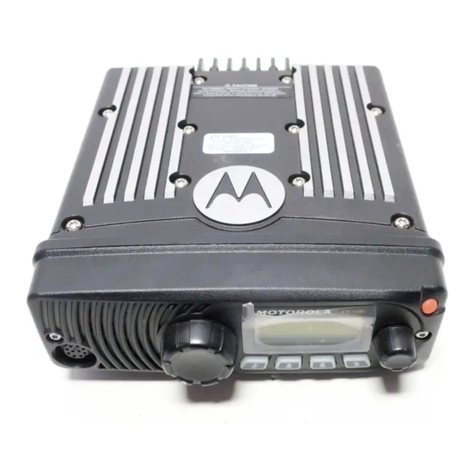EMS Wireless DataNex Data-20 Assembly instructions

5015 B.U. Bowman Drive Buford, GA 30518 USA Voice: 770-831-8048 Fax: 770-831-8598
Type Acceptance Test Report
Broad Band PCS Transceiver
FCC ID: DNY0A5DATA1900
FCC Rule Part: 24E
ACS Report Number: 03-0096-24TA
Manufacturer: EMS Wireless
Model: DataNex
Installation and Operators Guide

EMS Wireless
DataNex™
Data-20 Digital Radio
User Reference Manual
2850 Colonnades Court NW
Norcross, GA 30071
Phone: 770-582-0555
Fax: 770-729-0075

Table of Contents ii
DataNex EMS Wireless, DATA-20 Digital Radio
Document Number: Rev: A
Last Saved
NXE1 Manual Dwg # ; Revision Levels:
Section Drawing No: REV Revised /
Released
Reason
Data-20 A SN NEW

iii Table of Contents
DataNex EMS Wireless, DATA-20 Digital Radio
WARNINGS, CAUTIONS, AND GENERAL NOTES
This product conforms to FCC Part 15. Changes or modifications not expressly
approved by the party responsible for compliance could void the user's authority to
operate the equipment.
NOTE: This equipment has been tested and found to comply with the limits for a
Class B digital device, pursuant to Part 15 of the FCC Rules. These limits are
designed to provide reasonable protection against harmful interference in a
residential installation. This equipment generates, uses and can radiate radio
frequency energy and, if not installed and used in accordance with the instructions,
may cause harmful interference to radio communications. However, there is no
guarantee that interference will not occur in a particular installation. If this
equipment does cause harmful interference to radio or television reception, which
can be determined by turning the equipment off and on, the user is encouraged to
try to correct the interference by one or more of the following measures:
•Reorient or relocate the receiving antenna.
•Increase the separation between the equipment and receiver.
•Connect the equipment into an outlet on a circuit different from that to
which the receiver is connected.
•Consult the dealer or an experienced radio/TV technician for help.”
In accordance with FCC regulations regarding human exposure to radiofrequency
energy, this device shall be installed such that a minimum separation distance of 20cm
is maintained between it and general population.
The antennas used for this transmitter must not be co-located or operating in conjunction
with any other antenna or transmitter.
This Class B digital apparatus meets all requirements of the Canadian
Interference Causing Equipment Regulations. Operation is subject to the
following two conditions: (1) this device may not cause harmful interference, and (2)
this device must accept any interference received, including interference that may
cause undesired operation.
Cet appareillage numérique de la classe B répond à toutes les exigences de
l'interférence canadienne causant des règlements d'équipement. L'opération
est sujette aux deux conditions suivantes: (1) ce dispositif peut ne pas causer
l'interférence nocive, et (2) ce dispositif doit accepter n'importe quelle interférence
reçue, y compris l'interférence qui peut causer l'opération peu désirée.

Table of Contents iv
DataNex EMS Wireless, DATA-20 Digital Radio
Table of Contents
1 SYSTEM DESCRIPTION .......................................................................................................................1-1
1.1 Introduction ..................................................................................................................................................... 1-1
1.2 System Features ............................................................................................................................................... 1-1
1.3 Typical Configurations.................................................................................................................................... 1-2
1.3.1 Data Rate and Interface ............................................................................................................................. 1-2
1.3.2 Standalone Operation ................................................................................................................................ 1-2
1.3.3 Hot Standby (Protected) Operation............................................................................................................ 1-3
1.4 Regulatory Notices........................................................................................................................................... 1-3
1.5 System Description (QAM)............................................................................................................................. 1-4
1.5.1 Introduction ............................................................................................................................................... 1-4
1.5.2 QAM Modulator/IF Upconverter............................................................................................................... 1-5
1.5.3 RF Upconverter ......................................................................................................................................... 1-6
1.5.4 Power Amplifier (PA) ............................................................................................................................... 1-7
1.5.5 RF Downconverter .................................................................................................................................... 1-7
1.5.6 QAM Demodulator/IF Downconverter ..................................................................................................... 1-8
2INSTALLATION .....................................................................................................................................2-1
2.1 Unpacking ........................................................................................................................................................ 2-1
2.2 Notices............................................................................................................................................................... 2-1
2.3 Rack Mount...................................................................................................................................................... 2-2
2.4 Duplexer: Internal/External ........................................................................................................................... 2-2
2.5 Rear Panel Connections & Indicators ........................................................................................................... 2-3
2.6 Power Requirements ....................................................................................................................................... 2-5
2.6.1 Power Supply Card Slot Details ................................................................................................................ 2-5
2.6.2 AC Line Voltage........................................................................................................................................ 2-5
2.6.3 DC Input Option ........................................................................................................................................ 2-6
2.6.4 Fusing ........................................................................................................................................................ 2-6
2.7 Power-Up Setting............................................................................................................................................. 2-6
2.8 Data Interface .................................................................................................................................................. 2-8
2.8.1 4xE1/T1 MUX Channel Configurations.................................................................................................... 2-8
2.9 Hot Standby (Protected) Configuration ........................................................................................................ 2-9
2.9.1 Hot/Cold Standby Modes ........................................................................................................................ 2-10
2.9.2 Hot Standby Control using the TP64...................................................................................................... 2-11
2.9.3 Hot Standby Control with Single Unit..................................................................................................... 2-14
2.10 Site Installation .............................................................................................................................................. 2-15
2.11 Antenna/Feed System.................................................................................................................................... 2-16
2.11.1 Antenna Installation................................................................................................................................. 2-16
3FRONT PANEL OPERATION ...............................................................................................................3-1
3.1 Introduction ..................................................................................................................................................... 3-1
3.2 Front Panel Operation .................................................................................................................................... 3-1
3.2.1 LCD Display.............................................................................................................................................. 3-2
3.2.2 Cursor and Screen Control Buttons ........................................................................................................... 3-2
3.2.3 LED Status Indicators................................................................................................................................ 3-3

v Table of Contents
DataNex EMS Wireless, DATA-20 Digital Radio
3.2.4 Screen Menu Tree Structure ...................................................................................................................... 3-3
3.3 Main Menu....................................................................................................................................................... 3-4
3.3.1 Launch Screens.......................................................................................................................................... 3-5
3.4 Screen Menu Summaries ................................................................................................................................ 3-9
3.4.1 Meter ......................................................................................................................................................... 3-9
3.4.2 System: Card View.................................................................................................................................... 3-9
3.4.3 System: Power Supply............................................................................................................................. 3-10
3.4.4 System: Info............................................................................................................................................. 3-10
3.4.5 System: Basic Card Setup........................................................................................................................ 3-11
3.4.6 System: Factory Calibration .................................................................................................................... 3-12
3.4.7 System: Unit-Wide Parameters................................................................................................................ 3-13
3.4.8 System: Date/Time .................................................................................................................................. 3-14
3.4.9 System: Transfer...................................................................................................................................... 3-14
3.4.10 External I/O ............................................................................................................................................. 3-15
3.4.11 Alarms ..................................................................................................................................................... 3-16
3.4.12 Faults ....................................................................................................................................................... 3-17
3.4.13 G821 Parameters...................................................................................................................................... 3-17
3.4.14 QAM Modem Status................................................................................................................................ 3-18
3.4.15 QAM Radio TX Status ............................................................................................................................ 3-21
3.4.16 QAM Radio RX Status ............................................................................................................................ 3-22
3.4.17 QAM Radio TX Control.......................................................................................................................... 3-22
3.4.18 QAM Radio RX Control.......................................................................................................................... 3-23
3.4.19 QAM Modem Configure ......................................................................................................................... 3-24
3.4.20 QAM Radio TX Configure...................................................................................................................... 3-30
3.4.21 QAM Radio RX Configure...................................................................................................................... 3-31
3.5 NMS/CPU PC Configuration Software ....................................................................................................... 3-31
3.6 Up/Down Converter: Frequency Adjust...................................................................................................... 3-31
3.6.1 TX Frequency Adjust .............................................................................................................................. 3-31
3.6.2 AFC Level—RX...................................................................................................................................... 3-32
4 DATA INTERFACE CABLES ................................................................................................................4-1
5 APPENDIX .............................................................................................................................................5-1
5.1 Abbreviations & Acronyms ............................................................................................................................ 5-1
5.2 Conversion Chart ............................................................................................................................................ 5-3


1 System Description
1.1 Introduction
The DATA-20 is a spectrum-scalable point-to-point digital radio that can deliver 8Mbps of data.
Advanced modulation and digital processing techniques allow one radio to deliver user-defined
rates from 512 kbps to 8Mbps
The product is an all-digital, open-architecture, modular system (see Figure 1-1 below). The
versatility and power of the product comes from a complete range of “plug and play” personality
modules.
Figure 1-1. DATA-20 Modular Open Architecture
The high spectral efficiency of the DATA-20 is achieved by user-selectable QPSK, or 16 QAM.
Powerful Reed-Solomon error correction, coupled with a 20-tap adaptive equalizer, provides
unsurpassed signal robustness in hostile RF environments.
1.2 System Features
Selectable Rates: 512 kbps to 8.448 Mbps
Selectable Spectral Efficiency of 1.6 or 3.2 bps/Hz
QPSK & QAM Modulation
Powerful Reed-Solomon Error Correction with up to 12 level interleaver
Built-in Adaptive Equalizer
Internal Duplexer or external for hot standby system
Independent Synthesized Tx & Rx units

System Description 1-2
DataNex EMS Wireless, DATA-20 Digital Radio
Auto / Manual Power Control of up to 20 dB
Built-in Auto Pin Diode Attenuator for powerful signals
Accurate Digital Filtering for adjacent channel rejection
386 Processor-based controller
Extensive LCD screen status monitoring
Built-in BER Meter
Built-in NMS
Monitoring & Time Stamping
Monitor up to 4 external Analog & Digital I/O
Readout of RSL in dBm
Completely modular
1.3 Typical Configurations
1.3.1 Data Rate and Interface
Table 1-1 provides basic data channel capabilities for the DATA-20. See Section 2 (Installation)
for more detailed information.
Table 1-1.DATA-20 Data Channel Configurations
Data Rate MUX Hardware Channels Interface(s)
1.5 Mbps-8 Mbps 2 or 4 x E1/T1 2 or 4 G.703, E1/T1
512 kbps-2 Mbps QAM Modem 1Fractional E1/T1
512 kbps-2 Mbps QAM Modem 1 V35, RS449
1.3.2 Standalone Operation
The DATA-20 may be used as a standalone digital radio with an interface in the modem or with a
Multiplexer with 2 or 4 E1/T1 interfaces. The Multiplexer has an overhead channel which can be
utilized by the customer

1-3 System Description
DataNex EMS Wireless, DATA-20 Digital Radio
1.3.3 Hot Standby (Protected) Operation
The product in a hot standby configuration as depicted in Fig.1-2, using two DATA-20 radios and
a TP64 transfer panel.
TX RF
RELAY
DUPLEXER
DATA
SWITCH/
TRANSFER
LOGIC
TP64 TRANSFER
PANEL
Data-20 RADIO A
Data-20 RADIO B
DATA
TX
TX
RX RF
SPLITTER
RX
RX
A
NTENN
A
DATA
DATA
CNTL
CNTL
Figure 1-2. DATA-20 Hot Standby – Two Discrete Radios with Transfer Panel
1.4 Regulatory Notices
FCC Part 15 Notice
This equipment has been tested and found to comply with the limits for a Class A digital device,
pursuant to part 15 of the FCC Rules. These limits are designed to provide reasonable protection
against harmful interference when the equipment is operated in a commercial environment. This
equipment generates, uses, and can radiate radio frequency energy and, if not installed and used
in accordance with the instruction manual, may cause harmful interference to radio
communications. Operation of this equipment in a residential area is likely to cause harmful
interference, in which case the user will be required to correct the interference at his expense.
Any external data or audio connection to this equipment must use shielded cables.

System Description 1-4
DataNex EMS Wireless, DATA-20 Digital Radio
1.5 System Description (QAM)
1.5.1 Introduction
The product is a full-duplex digital radio. The following sections describe the TX system, RX
system, followed by sub-system components. Please reference the accompanying block
diagrams for clarification.
We will follow the typical end-to-end progression of a radio system starting with the TX baseband
inputs, to the QAM modulator, followed by the upconversion process and the power amplifier.
We then proceed to the RX preamplifier input, the downconversion process, followed by the QAM
demodulator and baseband outputs.
RF Linear
PA
Back
Pl
Antenna
12.8 MHz
Data, Address, I 2C, SPI Bus
Duplexer
Front Panel
Ribbon Cable
Uni v er sa l
Input AC
(DC Optional)
System
Monitor
(A/D)
RF Module
Down Converter
Up Converter
IF Card
Down Converter
Up Converter
400 MHz-
1.5 GHz
TX
RX
70 MHz
QAM Modem
Demodulator
Mod ulat or
Intelligent
MUX
+5/+15 VDC
130 Watt
Power
Supply
BarGraph
4 x 20 LCD Display
Status LEDs
Front
Panel
System CPU
NMS
Remote I/ O
Front Panel Interface
Serial PC Interface
Status/Command/Control I/O
4 Port
Data/Voice
Interface
Channel 1
Channel 2
Channel 3
Channel 4
Tr un k
Transfer Panel I/O
QAM Modem Module
+15 VDC
PA Control/
Current
Sense
Figure 1-3. DATA-20 System Block Diagram
.
All modules (excluding the Front Panel and Power Amplifier) are interconnected via the
backplane that traverses the entire width of the unit. The backplane contains the various
communication buses as well as the PA (Power Amplifier) control and redundant transfer
circuitry. The power supply levels and status are monitored on the backplane and the NMS/CPU
card processes the data.

1-5 System Description
DataNex EMS Wireless, DATA-20 Digital Radio
Figure 1-4. Location of theDATA-20Backplane and Power Amplifier
The NMS/CPU card incorporates microprocessor and FPGA logic to configure and monitor the
overall operation of the system via front panel controls, LCD screen menus, status LEDs and the
bar graph display. Module settings are loaded into the installed cards and power-up default
settings are stored in non-volatile memory. LCD screen menu software is uploaded into memory,
providing field upgrade capability. A Windows-based PC interface is available for connection at
the rear panel DATA port.
1.5.2 QAM Modulator/IF Upconverter
INTERLEAVE
RAM
QAM
ENCODER
NCO DIGITAL
POT
OCXO
12.8 MHz
FPGA
FPGA
EEPROM
uC
EEPROM
MICRO
CONTROLLER
LEVEL
TRANSLATOR
RS232
TRANSLATOR
QAM
DECODER
INTERLEAVE
RAM
RATE CONVERTER
PLL FIFO
SPI
IF
SYNTH IF
STATUS
IF OUT
IF REF
CLK OUT
TRUNK
I/O
TXD
BUS
DATA & CLK
IN
BUS
REF CLK
OUT
BUS
I2C IN
RXD
IF IN
AGC
BUS
DATA & CLK
OUT
DEBUG
LED
STATUS
REF CLK
NO
CONNECTION
uC BUS
LEGEND
Figure 1-5. QAM Modem Block Diagram
The QAM (Quadrature Amplitude Modulation) Modulator is the transmit portion of the QAM
Modem card. The QAM Modem also houses the IF Up/Down Converter. The QAM Modulator
utilizes the upconverter portion of the IF daughter card.
The QAM Modulator accepts the aggregate data stream via the backplane (see Figure 1-5
above). The module performs modulation at a carrier frequency of 6.4 MHz, adding FEC
(Forward Error Correction) bits while interleaving the blocks of data. The result is a very
spectrally efficient, yet robust linear modulation scheme. This process requires an ultra-stable

System Description 1-6
DataNex EMS Wireless, DATA-20 Digital Radio
master clock provided by an OCXO (oven controlled crystal oscillator) that is accurate to within
0.1 ppm.
BPF
70 MHz
BPF
6.4 MHz
IF Output
70 MHz
-10 dBm
PLL
Loop
Filter VCO
76.4 MHz PLL
Data
Clk
Enbl
Ref
IF Input
6.4 MHz
-20 dBm
Synth Level
Synth
Lock
Exciter
Level
Figure 1-6. IF Upconverter Block Diagram
The resultant carrier is translated up to 70 MHz by the IF Upconverter (see Figure 1-6). This is
accomplished by a standard mixing of the carrier with a phase-locked LO. A 70 MHz SAW filter
provides an exceptional, spectrally-clean output signal.
1.5.3 RF Upconverter
12.8 MHz Ref Osc
BPF
70 MHz IF
Input
uP
RFA Fwd Pwr Level
IPA Level
Synth Level
Temp Sense
Synth Lock
RF Output
TX ALC
BPF
70 MHz BPF
Diplexer
NMS
Synth Data
Synth Enbl
PLL
Loop
Filter VCO
PLL
Synth Lock
Synth Level
Data
Clk
Enbl
Ref
RFA Rev Pwr Level
Synth Clk

1-7 System Description
DataNex EMS Wireless, DATA-20 Digital Radio
Figure 1-7. RF Upconverter Block Diagram
The IF output carrier of the IF Upconverter daughter card is fed to the transmit portion of the RF
Module via an external (rear panel) semi-rigid SMA cable. This module performs the necessary
upconversion to the RF carrier (see Figure 1-7). There is an on-board CPU for independent
control of the critical RF parameters of the system.
Since this is a linear RF processing chain, an automatic leveling control loop (ALC) is
implemented here to maintain maximum available power output (and therefore maximum system
gain). The ALC monitors the PA forward power (FWD) output sample, and controls the
upconverter gain per an algorithm programmed in the CPU. The ALC also controls the power-up
RF conditions of the transmitter output.
1.5.4 Power Amplifier (PA)
The Power Amplifier (PA) is a separate module that is mounted to a heat sink and is fan-cooled
for reliable operation. The PA is a design for maximum linearity in an amplitude modulation-
based system.
1.5.5 RF Downconverter
BPF Diplexer
70 MHz
RF Input
RF AGC
IF Amp
IF Output
70 MHz
to QAM
Demod
Preamp
ALC
Loop Amp
ALC
Det
Atten
BPF
70 MHz
PLL
Loop
Filter VCO
PLL
Synth
Lock
Data
Clk
Enbl
Ref
ALC Control
12.8 MHz Ref Osc
uP
Synth Level
Synth Lock
NMS
Synth Clk
Synth Data
Synth Enbl
Figure 1-8. RF Downconverter Block Diagram
The receiver handles the traditional RF to IF conversion from the carrier to 70 MHz (see Figure 1-
8). Considerations are given to image rejection, intermodulation performance, dynamic range,
agility, and survivability. A separate AGC loop was assigned to the RF front end to prevent
intermodulation and saturation problems associated with reception of high level undesirable

System Description 1-8
DataNex EMS Wireless, DATA-20 Digital Radio
interfering RF signals resulting from RF bandwidth that is much wider than the IF bandwidth. The
linear QAM scheme is fairly intolerant of amplifier overload.
1.5.6 QAM Demodulator/IF Downconverter
IF Input
70 MHz
BPF
70 MHz
BPF
6.4 MHz
AGC Control
PLL
Loop
Filter VCO
76.4 MHz PLL
Data
Clk
Enbl
Ref
IF Output
6.4 MHz
-10dBm
Synth Level
Synth
Lock
Figure 1-9. IF Downconverter Block Diagram
The QAM (Quadrature Amplitude Modulation) Demodulator is the receive portion of the QAM
Modem card. The QAM Modem also houses the IF Up/Down Converter. The QAM Demod
utilizes the downconverter portion of the IF daughter card.
The IF Downconverter receives the 70 MHz carrier from the receiver portion of the RF Module via
an external semi-rigid cable and directly converts the carrier to 6.4 MHz by mixing with a low-
noise phase-locked LO (see Figure 1-9). System selectivity is achieved through the use of a 70
MHz SAW filter.
The QAM Demod receives and demodulates the 6.4 MHz carrier (see Figure 1-7). The
demodulation process includes the FEC implementation and de-interleaving that matches the
QAM modulator in the transmitter, and the critical “data assisted recovery” of the clock. This
process requires an ultra-stable master clock provided by an OCXO (oven controlled crystal
oscillator).
The output is an aggregate data stream that is distributed to the trunk port for if the data
input/output is out of the Modem, or to the backplane for connection to the multiplexer connected
on the backplane.

2 Installation
2.1 Unpacking
The following is a list of all included items.
Description Quantity
Digital Radio (3RU chassis) 1
Rack Ears (with hardware) 4
Extender Card (Universal QAM) — optional 1
Power Cord (IEC 3 conductor for AC, 2-wire for DC) 2
Manual ( or Soft copy on a CD) 1
Test Data Sheet (customer documentation) 1
Be sure to retain the original boxes and packing material in case of return shipping. Inspect all
items for damage and/or loose parts. Contact the shipping company immediately if anything
appears damaged. If any of the listed parts are missing, call the distributor or the factory
immediately to resolve the problem.
2.2 Notices
CAUTION
DO NOT OPERATE UNITS WITHOUT AN ANTENNA, ATTENUATOR, OR LOAD CONNECTED
TO THE ANTENNA PORT. DAMAGE MAY OCCUR TO THE TRANSMITTER DUE TO
EXCESSIVE REFLECTED RF ENERGY.
ALWAYS ATTENUATE THE SIGNAL INTO THE RECEIVER ANTENNA PORT TO LESS THAN
3000 MICROVOLTS. THIS WILL PREVENT OVERLOAD AND POSSIBLE DAMAGE TO THE
RECEIVER MODULE
WARNING

Installation 2-2
DataNex EMS Wireless, DATA-20 Digital Radio
HIGH VOLTAGE IS PRESENT INSIDE THE POWER SUPPLY MODULE WHEN THE UNIT IS
PLUGGED IN. REMOVAL OF THE POWER SUPPLY CAGE WILL EXPOSE THIS POTENTIAL
TO SERVICE PERSONNEL. TO PREVENT ELECTRICAL SHOCK, UNPLUG THE POWER
CABLE BEFORE SERVICING. UNIT SHOULD BE SERVICED BY QUALIFIED PERSONNEL
ONLY.
PRE-INSTALLATION NOTES
Always pre-test the system on the bench in its intended configuration prior to installation at a
remote site. Avoid cable interconnection length in excess of 1 meter in strong RF environments.
We highly recommend installation of lightning protectors to prevent line surges from damaging
expensive components.
2.3 Rack Mount
The product is normally rack-mounted in a standard 19” cabinet. Leave space clear above (or
below) the unit for proper air ventilation of the card cage. The rack ears are typically mounted as
shown in Figure 2-1. Other mounting methods are possible by changing the orientation of the
rack ears.
Figure 2-1.DATA-20 Typical Rack Mount Bracket Installation
2.4 Duplexer: Internal/External
Various duplexers, both internal and external, can be utilized. For current duplexers utilized with
the radios, please see the Appendix.

2-3 Installation
DataNex EMS Wireless, DATA-20 Digital Radio
2.5 Rear Panel Connections & Indicators
Please refer to the Figure 2-2 for a pictorial of a typical product rear panel (internal duplexer).
Following is a descriptive text of the connections and LED indicators.
Figure 2-2.DATA-20 Rear Panel Connections
Power Supply:
Inputs: AC: Universal Input, 100-240V, 50/60 Hz; IEC 3
conductor
DC: 24v/48v (Isolated Input); 2 pin socket (custom)
Status LED: +12V: Green LED indicates +12 volt supply OK
+5V: Green LED indicates +5 volt supply OK
NMS Card
I/O Port: RS232 PC access; 9 pin D-sub (female)
Reset Switch: Activates hard system reset
Status LED: Green LED Indicates CPU OK

Installation 2-4
DataNex EMS Wireless, DATA-20 Digital Radio
QAM Modem
I/O Ports: TRUNK: Data I/O 15pin D-sub (female) HD
RF
Connectors:
70 MHz
OUT:
SMA (female); Modulator output
70 MHz
IN:
SMA (female); Demod input
Status LED: MOD: GREEN indicates Modulator Lock
DEMOD: GREEN indicates Demod Lock
Up/Down Converter Module
RF
Connectors:
TO PA: SMA (female), Upconverter output to be applied
to linear Power Amplifier module (internal to
radio).
70 MHz
IN:
SMA (female), Modulated IF input from QAM
Modulator.
RF IN: SMA (female), Receiver input.
70 MHz
OUT:
SMA (female); Downconverter output to
Modulator input
Status LED: TX
LOCK:
GREEN indicates TX AFC LOCK
Flashing RED indicates LOSS OF TX LOCK
RX
LOCK:
GREEN indicates RX AFC LOCK and strong RX
signal
YELLOW indicates RX AFC LOCK and nominal
RX signal
RED (continuous) indicates RX AFC LOCK and
weak RX signal
RED (flashing) indicates LOSS OF RX LOCK

2-5 Installation
DataNex EMS Wireless, DATA-20 Digital Radio
RF I/O Panel
RF
Connectors:
ANTENNA: Type N (female), RF cabling from internal PA
module.
PA IN: SMA (female), RF cabling to internal PA
module.
RX OUT: SMA (female), RF cabling from internal
duplexer.
SEMI-RIGID CABLE
Ensure that the cables are secure and tightly attached.
Check for any damage (kinks or breaks in the copper sheath).
2.6 Power Requirements
2.6.1 Power Supply Card Slot Details
The leftmost slot in the DATA-20 card cage (as viewed from the rear of the unit) is designated as
the “PRIMARY A” power supply. The main bus voltages (+5 and +/-12) are summed in the
backplane and provide the supply the plug-in modules.
NOTE: The front panel LCD screen displays the system supply voltages and the
nomenclature follows the physical location of the power supply modules.
2.6.2 AC Line Voltage
The DATA-20 uses a high reliability, universal input switching power supply capable of operating
within an input range of:
100 - 240 VAC; 50/60 Hz
The power supply module is removable from the unit and a perforated cage protects service
personnel from high voltage. The power supply is fan cooled due to high power consumption by
the PA.
CAUTION
High voltage is present when the unit is plugged in. To prevent electrical shock, unplug the power
cable before servicing. Power supply module should be serviced by qualified personnel only.
Table of contents
Popular Radio manuals by other brands
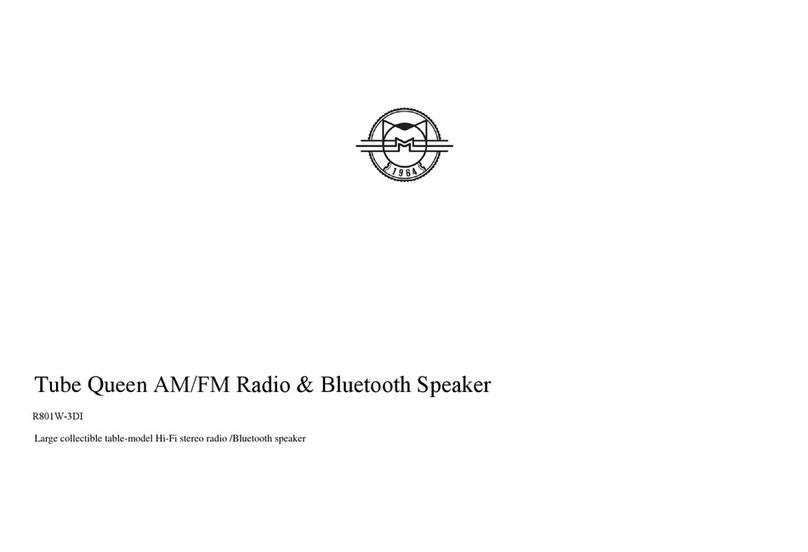
Airsmart Technology
Airsmart Technology R801W-3DI user manual
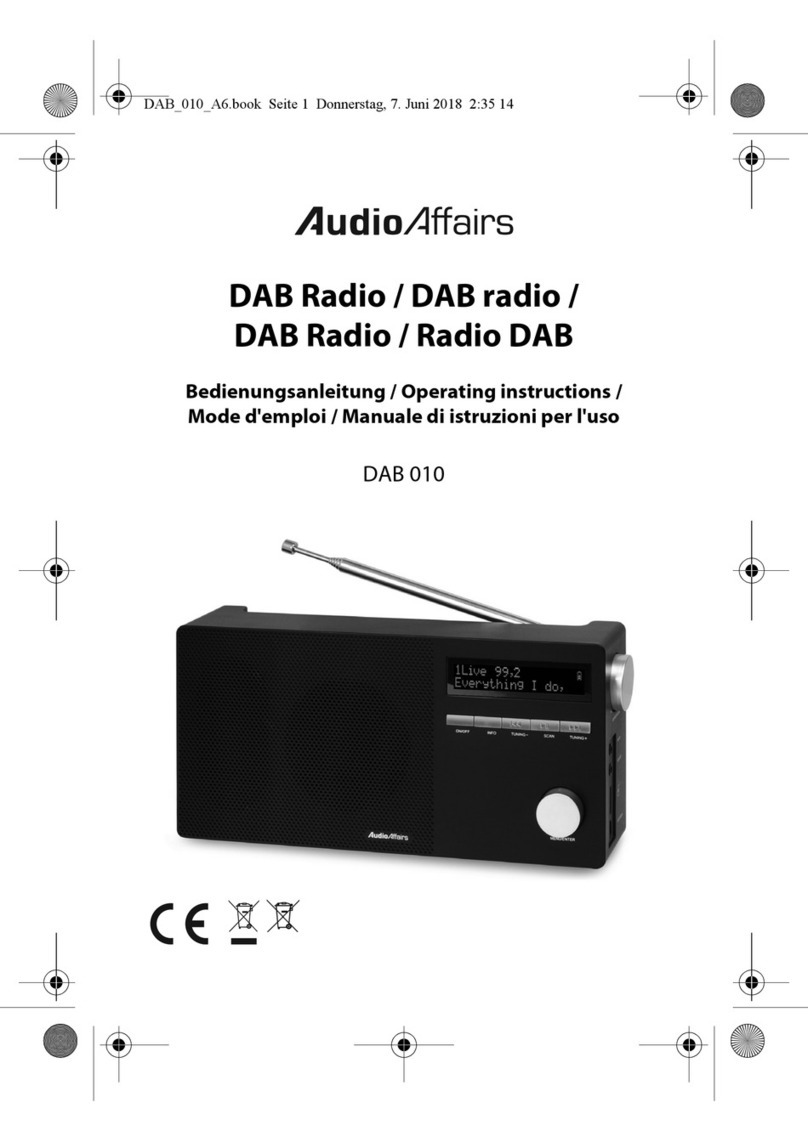
Globaltronics
Globaltronics Audio Affairs DAB 010 operating instructions
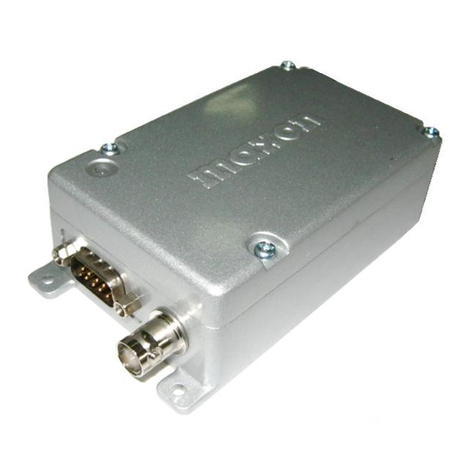
Maxon
Maxon SD170EX Series Service manual
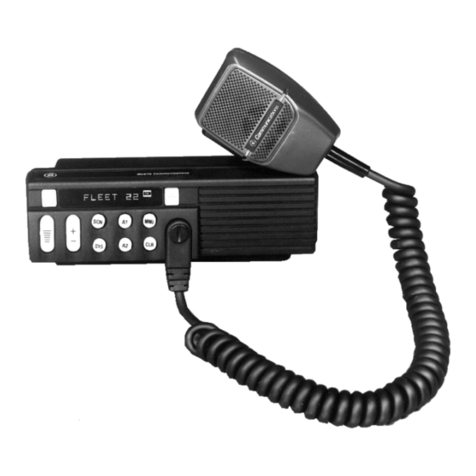
Ericsson
Ericsson MDX LBI-38848C Maintenance manual
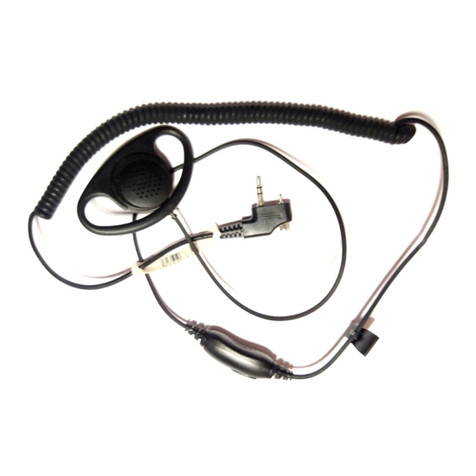
Maxon
Maxon SP-200 Series quick start guide

Crin
Crin Aprisa 4RF Product description
